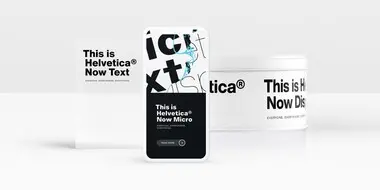Joanna Sans Nova®
The Eric Gill Series.

The Eric Gill Series.
The Eric Gill Series is a collection of 77 fonts in three families: Gill Sans® Nova, Joanna® Nova and Joanna Sans Nova. All the typefaces are derived from the original work of the influential British artist Eric Gill (1882-1940), acclaimed in his lifetime as a sculptor, letter-cutter and type designer. These are contemporary digital typefaces – with a wide range of weights, alternate characters and extended language support – that pay homage to Gill’s original designs.
The Joanna® Sans Nova family is the only typeface in the Eric Gill Series that was not initially designed by Gill. Created by Monotype Studio designer Terrance Weinzierl over a three-year period with digital applications at the forefront of the design criteria, Joanna Sans Nova is a humanist sans serif based primarily on Gill’s original Joanna. The design comprises 16 fonts, from thin to black, each with a complementary italic.





The Joanna® Sans Nova family is the only typeface in the Eric Gill Series that was not initially designed by Gill. Created by Monotype Studio designer Terrance Weinzierl over a three-year period with digital applications at the forefront of the design criteria, Joanna Sans Nova is a humanist sans serif based primarily on Gill's original Joanna. The design comprises 16 fonts, from thin to black, each with a complementary italic.
Joanna Sans Nova has a larger x-height than the original design to ensure high levels of legibility - even on small digital screens. Due to its inherent humanist proportions, Joanna Sans Nova is surprisingly comfortable for longer form reading. Its low contrast in character stroke weights also improves imaging in a variety of environments. In addition, the calligraphic and fluid details enable the roman and italic designs to shine in headlines and other display uses.
Joanna Sans features a robust range of OpenType features for fine typography, including small caps, old style figures, proportional figures, ligatures, superscript and subscript figures and support for fractions. With over 1000 glyphs per font, Joanna Sans supports more than 50 languages - including is equipped Greek, and Cyrillic.
"I've always been a fan of Gill's work, explains Weinzierl, and found the simple, humanist qualities of Joanna really fitting for a sans serif design. I wanted to make something with Gill flavor, but with more harmony in the extreme weights than Gill Sans - and with my twist on it. I went through six or seven different italic designs before landing on the current direction."
"The original Joanna had a very distinct italic, Weinzierl continues. "It's very condensed, and hasa very shallow angle. I wanted to have an italic that stood out, but in a different way. I took a cursive direction for the italic details, which are wider and slanted more, both improving character legibility."
The Joanna Sans Nova typeface family is part of the new Eric Gill series, drawing on Monotype's heritage to remaster and expand and revitalize Eric Gill's body of work, with more weights, more characters and more languages to meet a wide range of design requirements. The series also brings to life new elements inspired by some of Gill's unreleased work, discovered in Monotype's archive of original typeface drawings and materials of the last century.

As a Senior Type Designer in the Monotype Studio, Terrance Weinzierl has been creating and modifying typefaces for the Monotype Library and a wide range of brands since 2008. In addition to working on custom projects for Microsoft, Google, Barnes & Noble, Domino’s and SAP, he’s designed type for video games, professional sports teams and auto manufacturers.
We offer a number of ways for you to start working with our typefaces.
Designers and studios might be deeply familiar with Neue Helvetica, but it’s the product of a pre-digital era. Here are four reasons why it’s time to switch.

